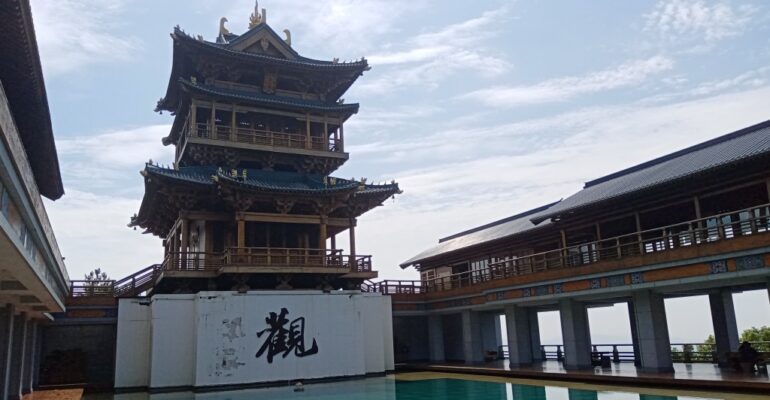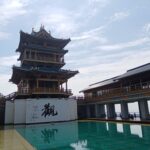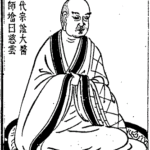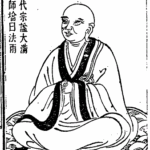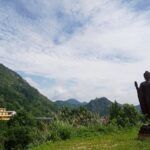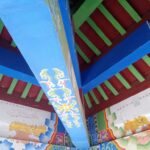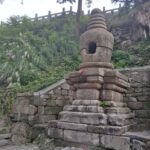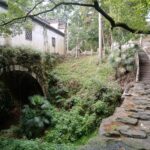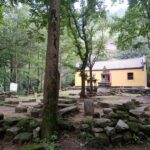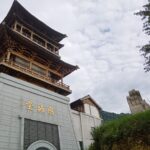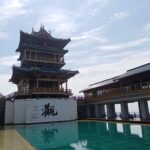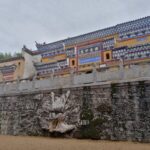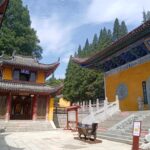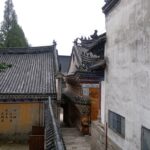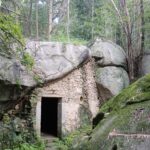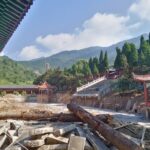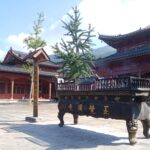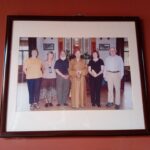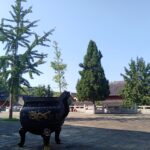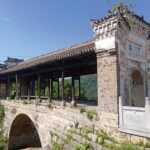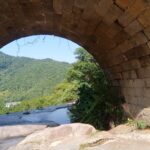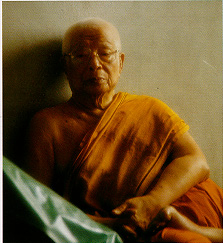Home of Zen
August 13, 2024 2024-09-08 11:05Home of Zen
慧禅 Hui Chan
During the summer of 2022, I went to visit Huangmei (黄梅) in Hubei, China, which is apparently famous for two things, its opera (one of the five major Chinese opera styles) and for having the first Chan/Zen monastaries.
It was in hills of Huangmei that the fourth Chan patriarch, Dayi Daoxin (大毉道信), founded what is now referred to as Sizu Si (Fourth Patriarch Temple) in AD624. One of his disciples and Dharma heir, Daman Hongren (大滿弘忍), then went on to found another monastary in the area, Wuzu Si (Fifth Patriarch Temple). They were the first two Chan monastaries to be built and laid the foundation for the growth of Chan.
Anyway, I only knew all of this after reading Bill Porter’s ‘Zen Baggage’. When reading it, I noticed that Huangmei was actually pretty close to my wife’s hometown and it would be a worthwile stop off when going back to see her family (obviously my family would not be interested in going, so I decided to go by myself).
The journey was a pretty eventful one. After getting the train for a few hours, I had to get a taxi to a hotel near Wuzu Si. During the taxi ride, the weather took a turn for the worse with some of the worst thunder storms I’ve ever been trapped in. You could barely see a few metres in front of you and just saw some blurry lights of lorries around us. As we were on a motorway, we couldn’t just stop or get off the road, so had to keep going. The taxi driver was obviously panicking and trying his best to stop both of us from dying in a nasty car accident. We finally made it off the motorway just as the storms died down with a sigh of relief.
As my hotel was near Wuzu Si, I decided to vist there first. My hotel was part of a new holiday village, conveniently built at the bottom of an old path that led straight up to the temple. Luckily, it was an unusually cool day for a Central China summer and after about 20 minutes I arrived. To be honest, once you’ve been to a few temples in China, you’ve been to them all and I’ve been to some more aesthetically pleasing ones than this (and Sizu Si). However, that wasn’t the reason I went to visit. It was more of a pilgrimage to help me understand the history behind my chosen practice and to connect more deeply with it.
If I’m being honest, I don’t buy into the lineage as much as other Chan/Zen practitioners, as there’s obviously a lot of inaccuracies with them. But there was still a special feeling when I was walking around the temple grounds, knowing how many dedicated practitioners have cultivated the Way here. Writing about it now, makes me think of something spoken by Master Jing Hui (who coincidentally was the Head of Sizu Si for a long time)
“Temple” in Chinese is also called “Bodhimandala”, a word somewhat coincidentally similar to the present scientific term, the field of Dharma. Nowadays, there is a term “the magnetic field”, isn’t there? That is, the field of magnetism. This temple, a place where people come with a compassionate Mind, a Mind that seeks for the ultimate truth, and a place where such consciousness is likely to be concentrated, is a field of Dharma. What is consciousness? It is called Avijnapti-rupa, the “non-revealing”. Consciousness is a kind of invisible energy in the sphere of Rupadharma (the phenomenal world). It is this same consciousness that animates our faith and resolution to keep the precepts. It is also a non-revealing energy. If one truly has such faith and resolution, he will then hold on to it, never departing from the precepts because he is always charged by a powerful will. The Temple, or Bodhimandala, we say, is the field of the Dharma where the Sangha and practitioners carry on self-training, become enlightened, and affirm the truth. Among temples, the Yufo (Jade Buddha) temple – built some one hundred and twenty years ago, is perhaps the most recent... Suppose a temple was one thousand two hundred years old, the power of its field would be enormous.
Master Jing Hui – The Gates of Chan Buddhism
As I walked behind the main temple towards an older area, a group of old women were waiting to take advantage of a naive foreigner. One of them pointed me towards something that was apparently worth seeing, so I decided to follow her advice. Then she started following me and soon arrived at a cave area. I went inside and saw that it was an area of worship. She told me to put my hand on a hand imprint for good luck and then started lighting a candle for me. I knew then she was expecting some money from me, so I told her I didn’t want anything and she wasn’t getting any money from me. She then proceeded to beg me, constantly saying “amituofo” and she’s a poor, old woman. I gave in, gave her some money and walked away with a smile on my face as it was a bit of a comical situation.
It was getting towards lunch time and I was feeling hungry. I was looking forward to tasting some of the food in the temple’s vegetarian restaurant. However, my luck was out. I went inside only to be told it had been booked out for a private event, so wasn’t open to the public. I then walked back down to my hotel, stopping off for some reganmian (热干面 hot dry noodles). I rested in the hotel for the rest of the day, learning some Chinese, meditating and watching some terrible TV.
A few photos of Wuzu Si
The next morning, I got up early and wanted to be at Sizu Si early as I knew it would be hotter than the day before. A particularly friendly taxi driver drove me to the other side of the town. I got to the temple gates and walked in to see a builiding site. Seemed like I’d picked the wrong time to visit. Construction in Chinese temples is something that I’m used to seeing though, as they’re all generally expanding and building something. Knowing that I’d come a long way to visit and the taxi I booked wouldn’t be here for a couple of hours, I had to make the most of it. So I walked past the building site at the front of the temple and explored what I could.
The thing that struck me most about Sizu Si, was the amount of photos on the walls, especially the ones with foreigners in them (Bill Porter was in more than one of them). I’d never seen this before in a Chinese temple. There was also a display that had information about the international spread of Chan, which was something they seemed to take pride in.
I knew there were other areas around the temple to visit, but it was getting hotter and I didn’t fancy going too far, so just found a shaded spot to relax until my taxi came, enjoying the countryside landscape.
A few photos of Sizu Si
So, that was my rather uninteresting pilgrimage to Huangmei.
Views: 46
